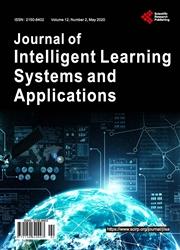Adaptive Fuzzy Sliding Mode Controller for Grid Interface Ocean Wave Energy Conversion
引用次数: 5
Abstract
This paper presents a closed-loop vector control structure based on adaptive Fuzzy Logic Sliding Mode Controller (FL-SMC) for a grid-connected Wave Energy Conversion System (WECS) driven Self-Excited Induction Generator (SEIG). The aim of the developed control method is to automatically tune and optimize the scaling factors and the membership functions of the Fuzzy Logic Controllers (FLC) using Multi-Objective Genetic Algorithms (MOGA) and Multi-Objective Particle Swarm Optimization (MOPSO). Two Pulse Width Modulated voltage source PWM converters with a carrier-based Sinusoidal PWM modulation for both Generator- and Grid-side converters have been connected back to back between the generator terminals and utility grid via common DC link. The indirect vector control scheme is implemented to maintain balance between generated power and power supplied to the grid and maintain the terminal voltage of the generator and the DC bus voltage constant for variable rotor speed and load. Simulation study has been carried out using the MATLAB/Simulink environment to verify the robustness of the power electronics converters and the effectiveness of proposed control method under steady state and transient conditions and also machine parameters mismatches. The proposed control scheme has improved the voltage regulation and the transient performance of the wave energy scheme over a wide range of operating conditions.网格界面海浪能量转换的自适应模糊滑模控制器
针对并网波能转换系统(WECS)驱动的自激感应发电机(SEIG),提出了一种基于自适应模糊滑模控制器(FL-SMC)的闭环矢量控制结构。该控制方法利用多目标遗传算法(MOGA)和多目标粒子群算法(MOPSO)对模糊控制器(FLC)的比例因子和隶属函数进行自动调整和优化。两个脉宽调制电压源PWM变换器与基于载波的正弦PWM调制为发电机和电网侧的变换器已经背靠背连接在发电机终端和公用电网之间通过公共直流链路。采用间接矢量控制方案,在变转子转速和变负载的情况下,保持发电机端电压和直流母线电压恒定。在MATLAB/Simulink环境下进行了仿真研究,验证了电力电子变换器在稳态和暂态以及机器参数不匹配情况下的鲁棒性和控制方法的有效性。该控制方案改善了波能方案在大范围工况下的电压调节和暂态性能。
本文章由计算机程序翻译,如有差异,请以英文原文为准。
求助全文
约1分钟内获得全文
求助全文

 求助内容:
求助内容: 应助结果提醒方式:
应助结果提醒方式:


